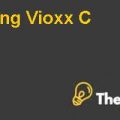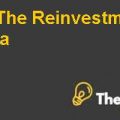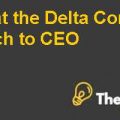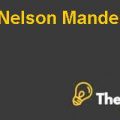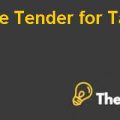
Cola Wars Continue: Coke and Pepsi in 2010
Case Memorandum
The Cola War began with the launch of “Pepsi Generation” by Pepsi in 1963, which sliced the market share of Coke. Later on, Coca Cola upgraded their bottler plants and improved the delivery services. However, Coca Cola and Pepsi operates in an oligopoly market structure because they are the only direct competitors of cola beverages and they have adopted different competitive strategies in order to capture the market share and this oligopolymarketstructure has influenced their competitive strategies such as they know that not only their own actions will alter their market position but their competitor’s actions will also influence their market positioning, meanwhile, the industry trends are also changing and consumers are using more of non-cola beverages as compared to cola beverages as shown in the exhibit 1 of the case. In addition to this, Pepsi and Coca Cola operated in a mature market with very low growth; hence, the competitive strategies are more focused slicing competitor’s market share.
The two cola giants launched their competitive strategies simultaneously and fought to slice the share of saturated market and got engaged in different battlefield such as, Pepsi launched “Pepsi Generation” campaign and targeted the young which helped Pepsi slice the market share and Coca Cola responded to this strategy through updating their bottler plants and enhancing delivery services. In addition to this, Pepsi conducted “The Pepsi Challenge” in order to reveal the truth that customers like the Pepsi blind taste more than Coke, which proved to be a successful strategy and increased its sales, however, Coke tried to counter their campaign by cutting prices at its own outlets but could not maintain its market share. Later on, Coca Cola signed an agreement with bottlers that they will provide unsweetened concentrate to bottlers, which brought its process similar to Pepsi and consequently Coke increased its prices, hence, Pepsi also followed the trend. Moreover, Coca Cola started to use low cost ingredients in order to reduce cost and it took three years for Pepsi to use low cost ingredients. Further, Coca Cola invested these cost savings into advertisement campaigns and increased the marketing budget by more than 100%. As a result, Pepsi also doubled its advertisement spending in order to stay in the market. Coke launched Diet Coke that brought a huge success for Coke and it was admired by the entire US soft drink market; hence, Pepsi also launched its diet Pepsi that was admired by the US market as well.
Meanwhile, both the company realized the opportunity of investing in non-carbonated drinks and launched juices, sport drinks, energy drinks, tea and bottled waters that proved to be a successful strategy. Moreover, both the companies also demonstrated that owning bottling operations will smooth out operations and will increase the sales revenues. So initially Coca Cola acquired bottlers and kept on adding more bottlers into its operations, which led to the establishment of its bottling subsidiary. Later on, Pepsi also acquired several bottling entities in order to compete with Coca Cola. Furthermore, the market trends changed when consumers became aware of the effects of carbonated soft drinks (CSDs) on their health and began to avoid the consumption of CSDs; therefore, Coca Cola introduced a soda machine thta could produce a number of beverages; which helped Coca Cola develop its strategy in accordance with the changing market trends.
Both the cola giants have adopted different competitive behavior and they have been competing in the industry based on their vertical integration element where the companies have been into the backward and forward integration aspects such as acquisition of bottlers. Along with this, both the companies and the competitors have been looking to deliver customer with lowest prices. This is because of the competitive behavior of the industry where people have quite a few options while purchasing a carbonated drink. Therefore, both Pepsi and Coke look to offer price discounts, promotional schemes and run advertising campaigns on different festive occasions to increase sales of their brand and beat the competitor. Therefore, the competitive behavior of both the competitors is to hold on to the temporary competitive advantage.
However, the cola wars led to the declining market share of both the companies as seen in the exhibit 7, market share of Coca Cola decreased by 15.50% over the period from 2004 to 2009, meanwhile, the market share of Pepsi also declined by 6.30% over the same period. Meanwhile, the increase in pricing of CSD industry has been very much slow in comparisons to consumer price indexseen in exhibit 5 of the case, where total change in CSD industry was just 0.60% in comparison to 2.90% of increase in consumer price index.
However, the competitive strategies adopted by Coca Cola and Pepsi were very much reasonable in a mature market but since the existing ....................
This is just a sample partial case solution. Please place the order on the website to order your own originally done case solution.
Analyzes the industry structure and competitive strategy of Coca-Cola and Pepsi over 100 years of rivalry. The most intense battle cola wars were fought for the $ 74 billion CSD industry in the United States, where the average American consumes 46 liters CSD per year. In "carefully waged competitive struggle," from 1975 to the mid-1990s, like Coke and Pepsi made an average annual growth of around 10%, both the U.S. and worldwide CSD consumption consistently rose. However, beginning in the late 1990s, the U.S. CSD consumption started to decline and new non-alcoholic drinks have become popular, threatening to change the company's brands, bottling, and pricing strategies. Case believes should be done to the Coke and Pepsi for sustained growth and profitability. Rewritten version of the previous case. "Hide
by David B. Yoffie, Renee Kim Source: HBS Premier Case Collection 22 pages. Publication Date: December 09, 2010. Prod. #: 711462-PDF-ENG

